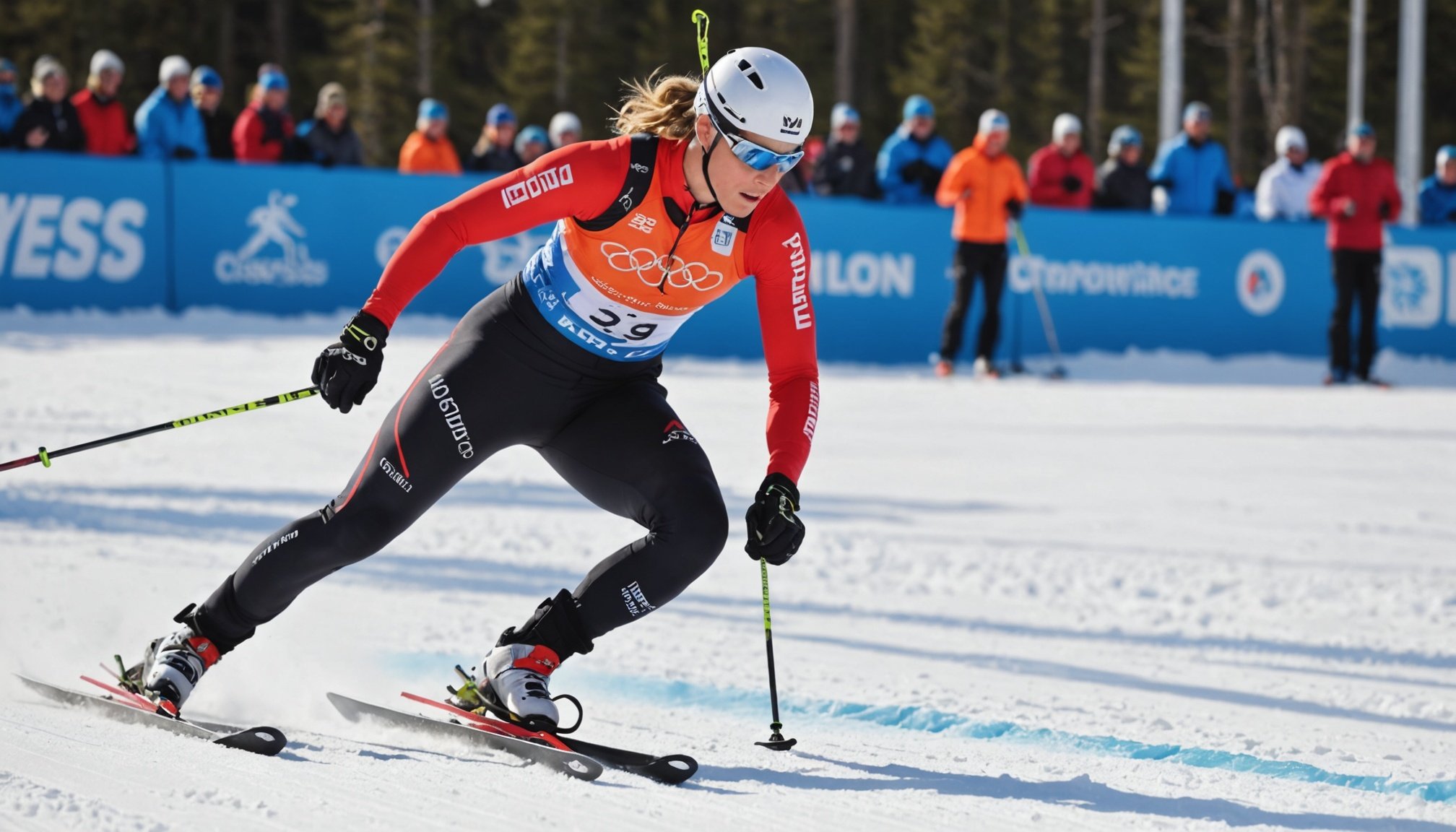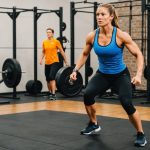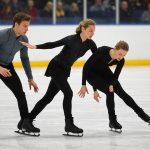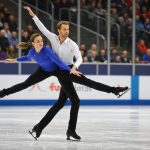Understanding Biathlon Performance Factors
The blend of skiing and shooting makes biathlon a unique and demanding sport. Central to excelling in this sport are the biathlon performance determinants, which centre around skiing efficiency and strength training.
In the world of biathlon, skiing efficiency influences overall performance significantly. This efficiency is not merely about speed; it embodies fluid movement and optimal energy expenditure. Efficient skiers harness better stability and swift recovery, enhancing their ability to transition seamlessly from skiing to shooting.
In the same genre : Achieving tranquility before the glide: key techniques for ice skaters to manage nerves and enhance performance
Turning to strength training, it plays an undeniable role in boosting skiing efficiency. Through targeted exercises, athletes enhance vital muscles, fortifying their performance on demanding courses. Improved muscle strength translates to better control and less fatigue, allowing biathletes to maintain high performance throughout grueling races.
Strength training is more than just building muscle; it’s about tailored exercises aimed at increasing endurance and efficiency. Specific routines can lead to noticeable improvements in skiing, providing athletes with the power they need for vigorous skiing stretches and precise, steady shooting. By focusing on strength training, biathletes make strides toward excelling under the pressure of complex biathlon circuits, where every second and every shot count.
Have you seen this : Elevating equestrian excellence: strengthening the bond between athletes and their horses for unmatched performance
Key Muscle Groups in Biathlon
In the pursuit of exceptional biathlon performance, understanding the pivotal muscle groups involved in skiing is crucial. The sport demands an impressive symbiosis of both lower and upper body strength. Key skiing muscles include the quadriceps, hamstrings, gluteal muscles, and calves, which drive forward momentum and stability on snow.
The quadriceps and gluteal muscle groups play a significant role in skiing efficiency, enabling powerful strides and delivering the drive needed for dynamic skiing maneuvers. Hamstrings aid in knee flexion and leg extension, while the calves assist with balance and initial propulsion. These combined efforts enhance an athlete’s skiing technique, allowing for fluid and efficient movement.
Physical conditioning of these primary muscle groups is quintessential for biathletes to achieve peak performance. Conditioning helps in developing muscle endurance, critical for maintaining energy levels during lengthy biathlon races. Effective targeting ensures athletes can perform consistently at high intensities without rapid onset of fatigue.
Therefore, tailored conditioning plans that prioritize these muscle groups are essential. This specific approach not only bolsters physical conditioning but also augments overall skiing efficiency, profoundly impacting a biathlete’s competitive edge.
Effective Strength Training Techniques
Strength training exercises are integral to enhancing biathlon training and boosting skiing performance. By focusing on specific techniques, biathletes can improve their overall efficacy on both demanding courses and shooting ranges.
Core Stability Exercises
Core stability is crucial for maintaining balance and posture in skiing. Engaging the core during movement supports not only skiing performance but also reduces the risk of injury. Recommended exercises include planks, Russian twists, and leg raises, which target multiple muscle groups simultaneously.
Leg Strengthening Movements
Leg strength directly affects a biathlete’s ability to power through ski trails. Exercises such as squats, lunges, and calf raises increase stamina and explosive power. These movements are tailored specifically for skiing, helping athletes deliver dynamic strides.
Upper Body Conditioning
Upper body strength plays a vital role in effective pole use and propulsion. Targeted exercises like push-ups, pull-ups, and rows reinforce muscle groups essential for upper limb coordination. Strengthening these areas contributes significantly to overall skiing performance, ensuring fluid motion and enhanced endurance in long races.
Integrating Strength Training into Biathlon Regimen
Integrating strength training seamlessly with a biathlon training regimen poses both challenges and opportunities. A well-structured training regimen can significantly enhance competitive performance by building essential strength without compromising agility.
Biathletes should aim for a balanced weekly schedule, intertwining strength workouts with skiing practice. Ideally, starting with three strength sessions weekly provides a robust foundation. Training plans may include alternating focus, such as dedicating certain days to core stability exercises and others to leg strengthening movements. This balance ensures all key areas receive attention, promoting comprehensive development.
In a typical weekly schedule, mix higher intensity** skiing sessions** with lighter strength days to aid recovery. Integrate rest or light aerobic activities to refresh and rejuvenate muscles while maintaining cardiovascular fitness. Such a holistic approach helps in optimizing biathlon training outcomes, aligning physical strength gains with improved efficiency on challenging courses.
Pragmatic planning enables biathletes to perform consistently, avoiding overtraining. Athletes should remain adaptable, adjusting routines to accommodate specific event schedules. Embracing these strategies not only fortifies physical prowess but also fosters mental resilience, crucial for exhaustive races. Thus, integrating strength training becomes a cornerstone for achieving heightened biathlon success.
Physiological Aspects of Skiing Efficiency
In biathlon, skiing efficiency is crucial for maintaining optimal performance. This involves understanding the physiological demands placed on athletes.
A key component of skiing efficiency is cardiovascular training, which supports muscular performance by enhancing oxygen delivery to muscles. By improving cardiovascular health, biathletes can sustain high-intensity efforts over longer periods. Activities such as interval training and long-distance running are beneficial in bolstering cardiovascular endurance.
Moreover, muscle endurance is vital for continuous skiing efficiency. Muscle endurance ensures that athletes can perform repeated movements over the duration of a race without significant fatigue. This endurance supports consistent skiing technique, essential for maintaining speed and fluidity.
To achieve this, biathletes incorporate specific exercises that focus on developing resistance to fatigue in major muscle groups. These include prolonged sessions of moderate-intensity exercises that condition the muscles to operate efficiently over extended durations.
Together, cardiovascular training and muscle endurance contribute to an athlete’s ability to maintain performance under the rigours of biathlon. Investing time in these aspects can significantly aid in refining the critical component of skiing efficiency, which ultimately influences overall biathlon success.
Expert Insights and Athlete Testimonials
Learning from expert insights and athlete testimonials can greatly enhance a biathlete’s training and performance. Conversations with experienced competitors reveal the transformative power of effective training practices.
Professional biathletes endorse the critical balance between strength training and skiing practice. They frequently highlight how coaching tips have refined their technique and mental readiness. For instance, one athlete noted improvements in skiing efficiency by integrating varied strength exercises into their routine. This blend of coaching strategies and strength-focused training allows athletes to adapt to diverse racing conditions.
In addition, many athletes express that carefully timed sessions of strength exercises foster both physical and mental resilience, crucial during the final stretches of a race. Their anecdotal evidence suggests that maintaining this balance leads to a sustainable improvement in overall performance.
Moreover, testimonials often emphasize the importance of individualised coaching. Tailored adjustments to training techniques ensure that each biathlete can address their unique strengths and weaknesses. Through these expert insights, emerging athletes can now model their training based on proven strategies, aligning with the methodologies of those who have excelled in the sport. Such guidance ultimately contributes to a targeted, effective training regime, bolstering competitive performance in biathlon.
Visual Learning and Demonstrations
In the realm of biathlon training, visual learning provides a significant edge, especially for those who find it easier to grasp concepts through observation. Video demonstrations of key strength exercises serve as a foundation for understanding complex training techniques.
These visual resources allow athletes to observe minute details in form and execution, which are crucial for optimising training results. By incorporating visual aids, biathletes can see firsthand how exercises are executed correctly, focusing on aspects such as posture, range of motion, and proper muscle engagement.
Training techniques are enriched by video guides, offering step-by-step instructions that verbal descriptions might miss. Athletes can replay these demonstrations, ensuring they internalise each movement’s nuances, which fosters faster learning and mastery of sophisticated maneuvers.
Access to such resources not only aids beginners in establishing a solid base but also helps seasoned biathletes refine and adapt their routines. Seasoned professionals often use these tools for continual improvement. As such, video-assisted learning is an invaluable asset, amplifying the benefits of structured strength exercises by providing unmatched clarity and insight into the intricacies of biathlon preparation.











